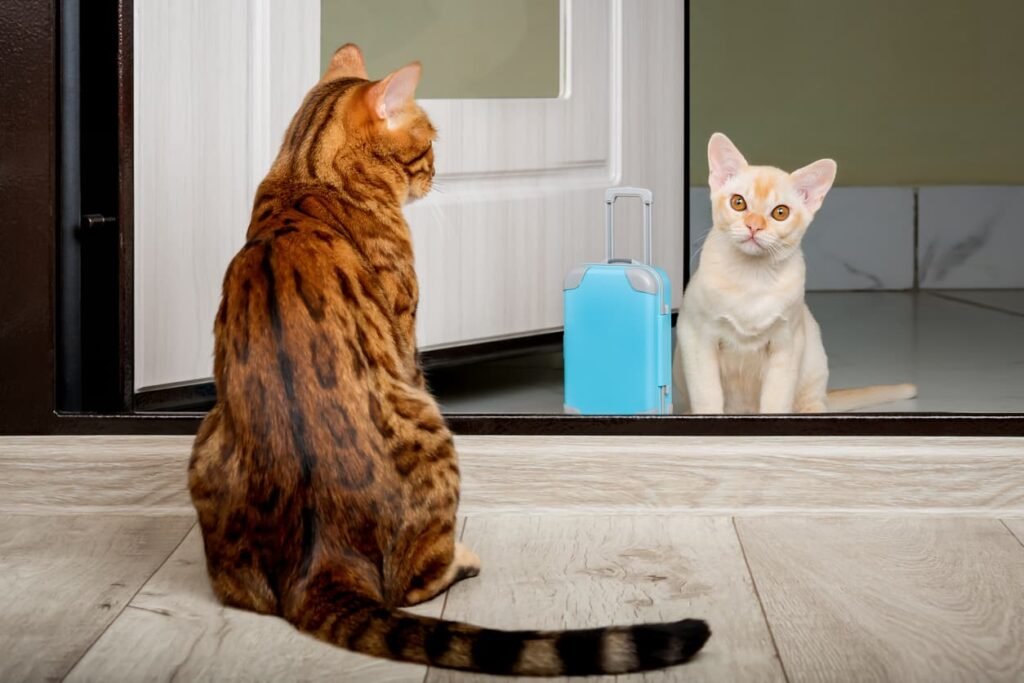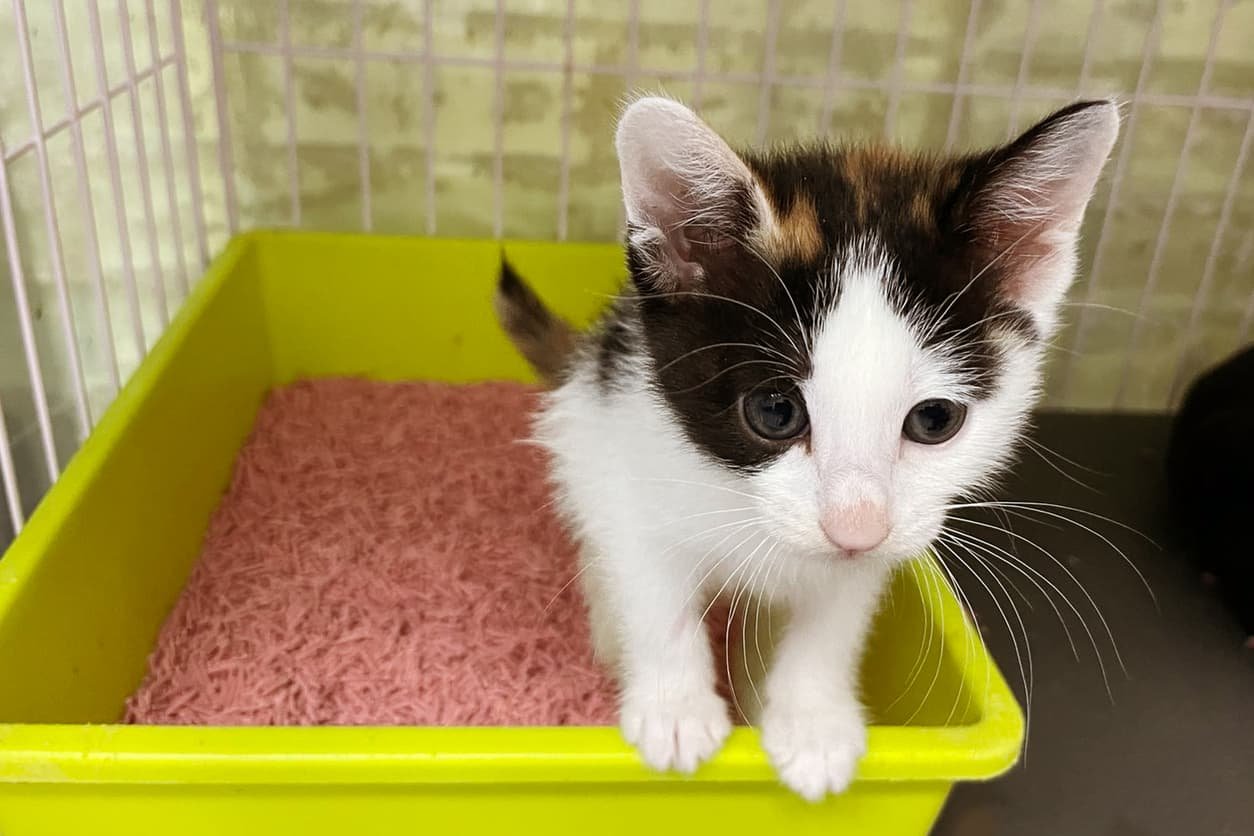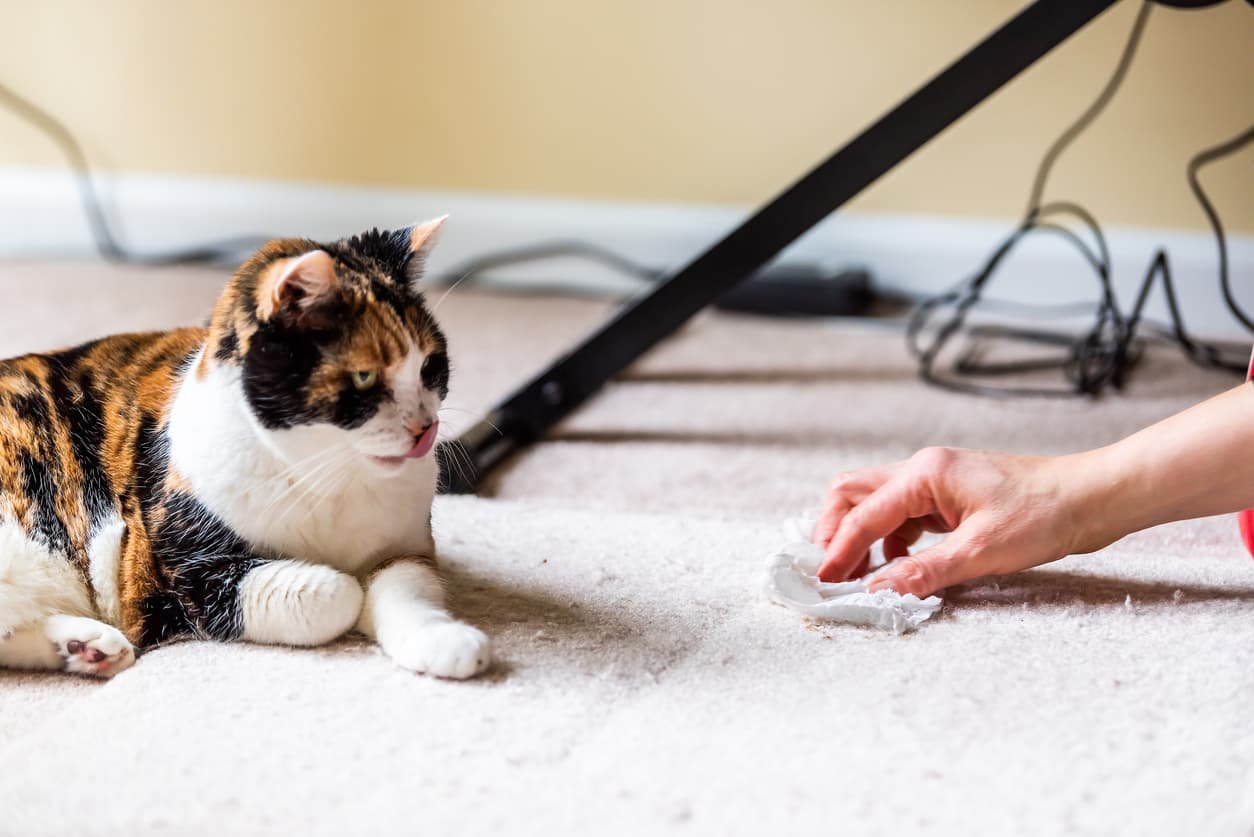Table of Contents
ToggleBringing a New Cat Home: The Right Way to Introduce a New Cat
Bringing a new feline into your home can be exciting but also challenging. The introduction process needs careful planning to ensure a smooth transition and a harmonious relationship between your resident cat and the newcomer. Cats are territorial animals, so suddenly placing them in the same space can lead to stress, anxiety, or even aggression.
To avoid conflicts, introduce a new cat gradually and with a well-thought-out approach. Whether you’re introducing a new cat to a resident cat, a dog, or even a household with multiple pets, patience and strategy are key. Follow these seven essential steps to ensure a peaceful and successful introduction process.
Step 1: Prepare a Safe Space for Your New Cat
Before bringing your new furry friend home, prepare a separate, secure space where they can feel comfortable. This space should include:
- A litter box
- Food and water bowls
- A comfortable bed
- Scratching posts and toys
- Hiding spots for security
Keeping the new cat to a single room for the first few days allows them to adjust to their surroundings without feeling overwhelmed. This also helps prevent immediate confrontations with your resident cat or other pets.
Step 2: Swap Scents Before Face-to-Face Introductions
Scent plays a huge role in feline communication. Before letting your cats see each other, swap their scents to help them get familiar without direct contact. Here’s how:
- Rub a soft cloth on your resident cat, then place it near the new cat’s bedding. Do the same for the new cat and leave it near your resident cat.
- Swap their bedding after a couple of days to introduce each other’s scent gradually.
- Let them explore the other’s scent through a closed door before a face-to-face meeting.
This method allows both cats to become accustomed to the other’s scent in a non-threatening way, making the introduction process smoother.
Step 3: Start With a Controlled Visual Introduction
Once both cats seem comfortable with each other’s scent, the next step is a visual introduction. This can be done by:
- Using a baby gate or a cracked door to allow them to see but not touch each other.
- Feeding them on opposite sides of the barrier to create positive associations with each other’s presence.
- Gradually increasing the amount of time they spend seeing each other.
If there is hissing or growling, don’t worry—it’s normal. However, if aggression escalates, slow down the introduction process and proceed with caution.
Step 4: Supervised Face-to-Face Meetings
When both cats seem relaxed during visual introductions, it’s time for a supervised face-to-face meeting. Keep these initial encounters short and positive:
- Choose a neutral space (not one cat’s favorite area).
- Have treats and toys on hand to create distractions.
- Keep the interaction brief—only a few minutes at first.
- Observe their body language for signs of stress or aggression.
If tension arises, separate them and try again later. Do not force interaction, as this can cause long-term hostility. Introduce a new cat with patience and persistence, allowing both felines to build confidence in each other’s presence.
Step 5: Gradually Increase Shared Time
As the cats become more comfortable, increase the time they spend together. Play sessions and treats can help reinforce positive interactions. Look for signs of progress, such as:
✅ Curiosity instead of fear
✅ Playing together (or near each other)
✅ Relaxed body language
If either cat shows signs of aggression—such as swatting, excessive growling, or prolonged hissing—return to an earlier stage of the introduction process and proceed more slowly. Be sure to introduce a new cat at a pace that makes both felines feel secure.
Step 6: Introducing a Dog and a Cat
If you’re introducing a dog and a cat, follow these extra precautions:
- Keep the dog on a leash during the first interactions.
- Allow the cat to approach on their terms.
- Use treats and positive reinforcement to reward calm behavior.
- Never force them to interact—let trust develop naturally.
Some cats and dogs may become best friends, while others may prefer to coexist with minimal interaction. Patience is key to creating a peaceful household when introducing a dog and a cat.
Step 7: Maintain a Peaceful Multi-Cat Household
Once the introduction process is complete, maintaining harmony is essential. Here are some final tips:
- Provide multiple resources: Have enough litter boxes, food bowls, and water stations to prevent competition.
- Respect personal space: Even bonded cats need occasional alone time.
- Monitor behavior changes: If sudden aggression occurs, reassess the living environment and consult a vet if necessary.
- Continue positive reinforcement: Reward good behavior with treats, playtime, and affection.
The key to a successful multi-cat household is to introduce a new cat gradually and ensure both felines have their own space.
Why a Cat Tunnel Bed Can Help the Introduction Process
When you introduce a new cat to your home, providing safe spaces for both the new and resident cat is crucial. A cat tunnel bed is an excellent addition to this process, offering a cozy retreat where your cat can feel secure while adjusting to their new surroundings. These beds serve a dual purpose—providing a fun play area while also acting as a hiding spot during stressful moments. The enclosed design helps reduce anxiety, allowing the new cat to observe their environment without feeling exposed. Additionally, cat tunnel beds encourage interactive play, helping both cats release energy and build positive associations with each other. As they become more comfortable, you may even find your resident cat and the newcomer chasing each other through the tunnel, strengthening their bond naturally. Investing in a cat tunnel bed is a great way to make the introduction process smoother and more enjoyable for your feline companions.
Final Thoughts: A Successful Cat Introduction Takes Time
Successfully introducing a new cat requires patience, planning, and gradual exposure. Every cat has a unique personality, so some introductions may take days while others could take weeks. The key is to introduce a new cat at their own pace, ensuring a smooth transition and a happy, stress-free home.
With the right approach, your resident cat and new cat to the household can become great companions—or at least learn to live peacefully together. Introduce a new cat carefully, follow these steps, and soon your feline family will be thriving!
FAQ
How long does it take for cats to get used to each other?
It typically takes 2 to 4 weeks for cats to get used to each other, though some may take longer. Gradual introductions, scent swapping, and positive reinforcement help ease the process and build a peaceful relationship.
What is the 3-3-3 rule for new cats?
The 3-3-3 rule for new cats outlines adjustment phases: 3 days to decompress, 3 weeks to start settling in and learning routines, 3 months to fully adjust, bond, and feel at home in their new environment.
What not to do when introducing a new cat?
When introducing a new cat, don’t rush the process, don’t force interactions, avoid sharing litter boxes or food bowls too soon, and don’t skip scent-swapping or safe zones. Patience and gradual steps are key to a smooth introduction.
What is the fastest way to introduce a new cat?
The fastest—and safest—way to introduce a new cat is through gradual scent swapping, visual introductions with barriers, and supervised short meetings. Rushing can cause stress or aggression, so take it step by step over several days.
Why are cats so hard to introduce?
Cats are hard to introduce because they’re territorial and sensitive to change. A new cat disrupts their space and routine, triggering stress or defensive behavior. Slow, controlled introductions help build trust and reduce conflict.
What cat should I get as a beginner?
As a beginner, consider easygoing, low-maintenance breeds like the American Shorthair, British Shorthair, Ragdoll, or Burmese. These cats are friendly, adaptable, and generally healthy—great choices for first-time cat owners.










